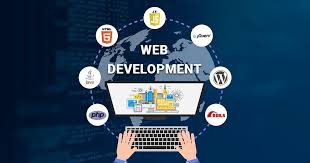Sales success rarely happens by chance. Behind every high-performing sales team lies a structured workflow designed to streamline processes, remove inefficiencies, and maximize productivity. A strong sales workflow provides clarity, aligns teams around common goals, and ensures that every activity directly contributes to revenue growth. Without a well-defined process, even skilled sales professionals can struggle
Sales success rarely happens by chance. Behind every high-performing sales team lies a structured workflow designed to streamline processes, remove inefficiencies, and maximize productivity. A strong sales workflow provides clarity, aligns teams around common goals, and ensures that every activity directly contributes to revenue growth. Without a well-defined process, even skilled sales professionals can struggle with wasted effort, misaligned priorities, and missed opportunities.
Modern businesses recognize that effective sales workflows are not just about efficiency but also about adaptability. Buyers expect personalized experiences, rapid responses, and seamless engagement across multiple touchpoints. To deliver on these expectations, organizations need workflows that integrate technology, automate routine tasks, and provide visibility across the sales pipeline. This is why many companies invest in solutions like a Salesforce–Marketo workflow, which enables sales and marketing teams to collaborate smoothly by sharing accurate lead data and insights in real time. With connected systems and structured processes, sales organizations can focus less on administrative tasks and more on building meaningful customer relationships.
Why Sales Workflows Matter
A sales workflow acts as a blueprint for consistent execution. It maps the journey from lead generation to closed deal, ensuring that no steps are overlooked. By standardizing tasks, workflows create accountability and eliminate guesswork. This consistency not only improves efficiency but also builds customer trust, as prospects receive a seamless experience at every stage.
Without a structured workflow, sales teams often operate in silos, relying on individual approaches rather than coordinated strategies. This lack of alignment leads to inconsistent outcomes, pipeline gaps, and poor forecasting accuracy. In contrast, high-performance workflows provide clarity on roles, responsibilities, and next steps, enabling teams to operate like a well-coordinated unit.
Step 1: Define Clear Sales Stages
The foundation of any workflow is a well-defined sales process. Each stage of the pipeline—from lead qualification to closing—should be clearly outlined. For example, a typical process may include lead capture, prospecting, qualification, proposal, negotiation, and closing.
By defining stages, teams gain visibility into where opportunities stand and what actions are required to advance them. This also improves reporting accuracy, as leaders can monitor pipeline health and forecast revenue with greater confidence.
Step 2: Align Sales and Marketing
High-performance workflows rely on strong alignment between sales and marketing. Misaligned teams often argue over lead quality or complain about poor follow-up rates. To address this, organizations should create shared definitions of qualified leads and establish service-level agreements (SLAs) for response times.
When sales and marketing teams work together, lead nurturing improves, conversion rates rise, and customer experiences become more consistent. Integrated platforms ensure that marketing data flows seamlessly into the sales process, giving reps valuable insights into buyer behavior before they even make contact.
Step 3: Automate Repetitive Tasks
Repetitive administrative tasks are among the biggest barriers to productivity. Manual data entry, follow-up reminders, and reporting consume valuable time that could be spent selling. High-performing sales teams embrace automation to streamline these activities.
CRM systems can automatically capture customer interactions, while automated workflows can schedule reminders, assign leads, and trigger personalized emails. By reducing manual workload, automation ensures that sales reps focus on high-value interactions with prospects and customers.
Step 4: Standardize Lead Management
Effective lead management is crucial for building a reliable sales workflow. Organizations should establish clear processes for capturing, qualifying, and distributing leads. A structured lead scoring system helps prioritize opportunities based on buyer intent, engagement level, and fit with the target profile.
Without standardization, valuable leads can slip through the cracks or receive inconsistent follow-up. By assigning responsibility and creating clear rules, sales teams ensure that every lead receives timely attention and that no opportunities are lost.
Step 5: Streamline Approvals and Handoffs
Sales workflows often stall during approval processes. Discount requests, contract reviews, and proposal sign-offs can take days if not managed efficiently. High-performance workflows minimize delays by using digital tools for electronic signatures, automated approval routing, and centralized documentation.
Additionally, handoffs between sales development representatives (SDRs), account executives (AEs), and customer success teams should be carefully designed. Clear documentation and communication prevent misunderstandings and ensure a smooth transition from one stage to the next.
Step 6: Provide Real-Time Visibility
Transparency is critical in high-performance workflows. Sales leaders need real-time visibility into deal progress, pipeline health, and performance metrics. Dashboards and reporting tools provide instant insights, enabling leaders to make data-driven decisions.
Visibility also benefits individual reps, who gain clarity on their targets, pipeline status, and next steps. This reduces uncertainty and helps salespeople manage their time more effectively.
Step 7: Continuously Optimize the Workflow
A sales workflow should never remain static. Markets evolve, customer expectations shift, and technology advances. High-performing teams regularly review their workflows to identify bottlenecks, eliminate unnecessary steps, and adopt new best practices.
Feedback from frontline sales reps is especially valuable in this process. By involving the team in workflow optimization, organizations foster a culture of continuous improvement and ensure that processes remain relevant and effective.
Benefits of a High-Performance Sales Workflow
When organizations build and optimize their workflows, the benefits are substantial.
- Improved Efficiency: Automation and streamlined processes reduce wasted effort.
- Higher Conversion Rates: Consistent follow-up and nurturing improve lead-to-deal outcomes.
- Better Collaboration: Alignment between sales, marketing, and customer success teams ensures seamless customer experiences.
- Stronger Forecasting: Accurate pipeline visibility enables better decision-making.
- Employee Satisfaction: Reps spend more time selling and less time on repetitive tasks, reducing frustration.
These benefits directly translate into higher revenue, stronger customer loyalty, and long-term business growth.
Common Pitfalls to Avoid
Even with good intentions, some organizations struggle to implement effective workflows. Common mistakes include overcomplicating the process, failing to secure team buy-in, and neglecting integration between tools. Workflows that are too rigid can also backfire, limiting flexibility in unique customer scenarios.
To avoid these pitfalls, organizations should keep workflows simple, involve stakeholders early, and prioritize scalability. Technology should support the workflow, not dictate it. A well-designed workflow balances structure with adaptability, allowing sales teams to deliver consistent yet personalized experiences.
Conclusion
Building a high-performance sales workflow is not a one-time project but an ongoing journey. By defining clear stages, aligning sales and marketing, automating repetitive tasks, standardizing lead management, streamlining approvals, and ensuring visibility, organizations can create a process that drives consistent results.
The payoff is significant: more productive sales teams, stronger collaboration, faster deal cycles, and improved customer satisfaction. In today’s competitive market, organizations that master their sales workflows will always have an edge over competitors. Now is the time to assess your processes, eliminate inefficiencies, and design a workflow that supports long-term success.




















Leave a Comment
Your email address will not be published. Required fields are marked with *